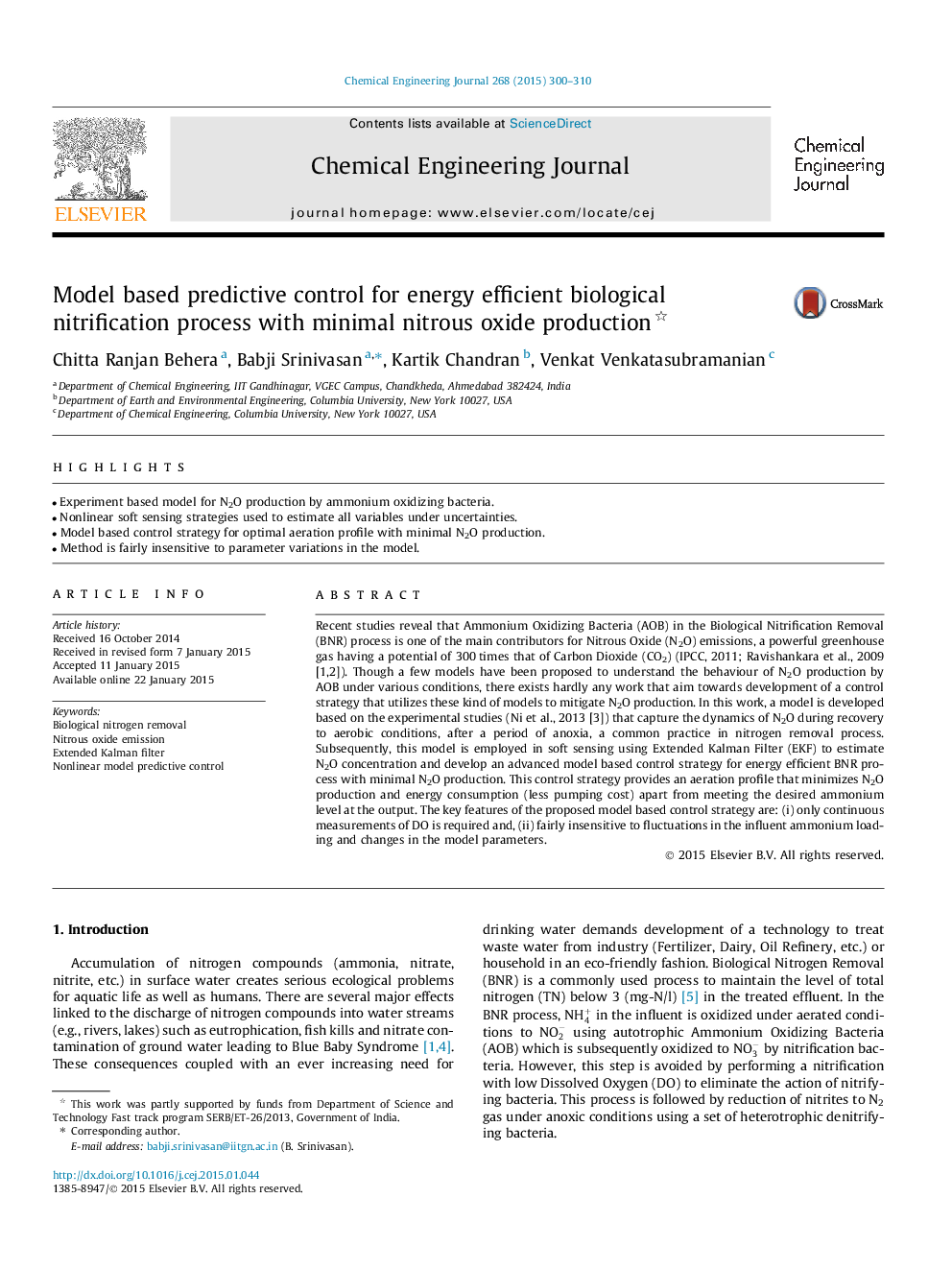| Article ID | Journal | Published Year | Pages | File Type |
|---|---|---|---|---|
| 146575 | Chemical Engineering Journal | 2015 | 11 Pages |
•Experiment based model for N2O production by ammonium oxidizing bacteria.•Nonlinear soft sensing strategies used to estimate all variables under uncertainties.•Model based control strategy for optimal aeration profile with minimal N2O production.•Method is fairly insensitive to parameter variations in the model.
Recent studies reveal that Ammonium Oxidizing Bacteria (AOB) in the Biological Nitrification Removal (BNR) process is one of the main contributors for Nitrous Oxide (N2O) emissions, a powerful greenhouse gas having a potential of 300 times that of Carbon Dioxide (CO2) (IPCC, 2011; Ravishankara et al., 2009 [1,2]). Though a few models have been proposed to understand the behaviour of N2O production by AOB under various conditions, there exists hardly any work that aim towards development of a control strategy that utilizes these kind of models to mitigate N2O production. In this work, a model is developed based on the experimental studies (Ni et al., 2013 [3]) that capture the dynamics of N2O during recovery to aerobic conditions, after a period of anoxia, a common practice in nitrogen removal process. Subsequently, this model is employed in soft sensing using Extended Kalman Filter (EKF) to estimate N2O concentration and develop an advanced model based control strategy for energy efficient BNR process with minimal N2O production. This control strategy provides an aeration profile that minimizes N2O production and energy consumption (less pumping cost) apart from meeting the desired ammonium level at the output. The key features of the proposed model based control strategy are: (i) only continuous measurements of DO is required and, (ii) fairly insensitive to fluctuations in the influent ammonium loading and changes in the model parameters.
